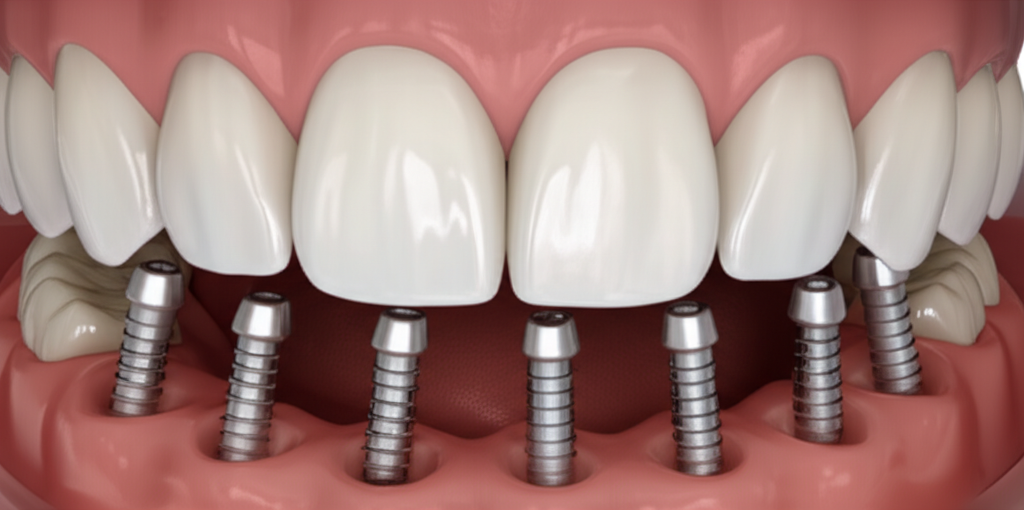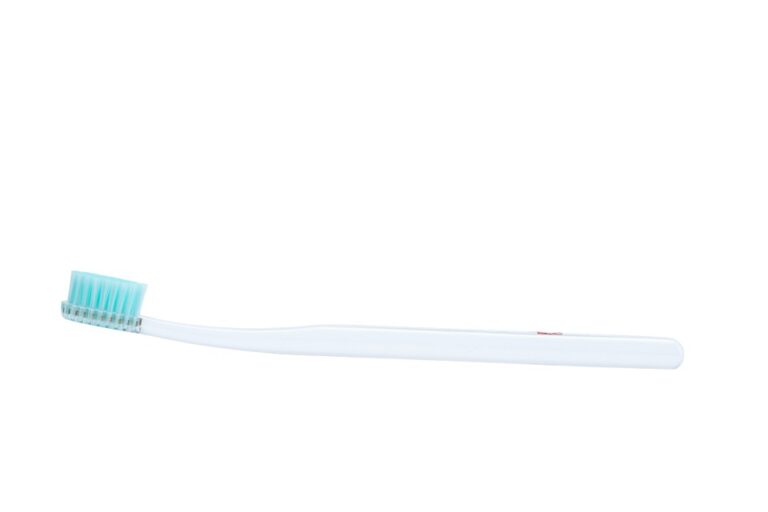
What Are Full Mouth Dental Implants? Your Complete Guide to a Restored Smile
Do you wish you could smile without hiding your teeth? Are you tired of loose dentures or missing teeth that keep you from eating the foods you love? This article is for you. I’ll walk you through what full mouth dental implants are, why they matter, and how they can help you find your smile again. Trust me—if you want straight answers in plain English about new teeth that look and feel real, you’re in the right place.
Table of Contents
- Introduction: Why Full Mouth Dental Implants Matter
- What Are Full Mouth Dental Implants?
- How Do Full Mouth Dental Implants Work?
- What Types of Full Mouth Dental Implants Exist?
- Are Full Mouth Implants Right for Me?
- Step-by-Step: The Full Mouth Dental Implant Procedure
- How Do Full Mouth Implants Compare to Dentures?
- Recovery, Healing, and Post-Op Care
- How to Maintain Full Mouth Dental Implants
- How Much Do Full Mouth Dental Implants Cost?
- Summary: What Should I Remember?
- References
Introduction: Why Full Mouth Dental Implants Matter
Let’s be honest—a happy, good-looking smile can change your life. If you’ve lost most or all of your teeth, you probably hide your smile or skip hanging out with people. Chewing can be hard, and you might stop eating your favorite foods. Old-style dentures might slide around or hurt your mouth. Life just feels a bit harder.
Here’s the problem: missing teeth are about more than just looks. Losing teeth can cause your jawbone to get weaker, make it hard to talk, and drop your confidence. It’s not just about looks. Research shows that missing lots of teeth can make daily life tough (see References).
That’s where full mouth dental implants are a game-changer. They aren’t just fake teeth—they are a new, lasting base for your smile. Think of them as a strong, steady set of teeth that act almost just like your real ones.
What Are Full Mouth Dental Implants?
Come along for a second. Imagine this: all your missing top or bottom teeth, replaced with new teeth that are fixed, strong, and look just like real ones. That’s what full mouth dental implants do.
Meaning: Full mouth dental implants are permanent, fixed replacements for ALL the teeth in your upper or lower jaw. You might also hear them called “full arch dental implants” or “all-on-4 implants.”
- Unlike regular dentures, which you take out at night, full mouth implants are always in place.
- They don’t slide around when you eat or talk.
- They use titanium or zirconia screws (implants) put in your jaw to hold your new teeth.
Main Parts:
How Are They Different from Dentures?
- Steadiness: Implants don’t move. Dentures do.
- Jaw Health: Implants help keep your jawbone strong. Dentures let your bone get weaker.
- Comfort: No more glue. No more sore spots.
How Do Full Mouth Dental Implants Work?
Have you wondered how a few little screws keep a whole set of teeth in place? Here’s how it works:
Your dentist (sometimes a prosthodontist or oral surgeon) puts four, six, or more implants into your jaw. These act like sturdy roots. Then, a custom bridge or set of teeth is attached, so everything stays steady.
Why Titanium or Zirconia?
These are super-strong and work well with your body. Your bone grows right onto the implant in a process called osseointegration. That’s what makes implants so strong.
Picture it like this: Think of a table. Regular dentures just sit on the top like a plate. Implants are like table legs stuck into the ground—they don’t go anywhere, even if you bump them.
What Types of Full Mouth Dental Implants Exist?
You have a few choices when it comes to full mouth implants. Your dentist will help you pick what’s best.
All-on-4® Dental Implants
All-on-4® means four dental implants are put into your jaw at planned angles. These support a whole row of new teeth!
- Upside: Fewer implants, less surgery, and often a faster recovery. Many people get new teeth the same day (“teeth in a day”).
- Good For: People who have lost some bone and want a quicker option.
All-on-6™ Dental Implants
All-on-6™ uses six implants for more support.
- Upside: Even sturdier, great for people with enough bone. May last even longer!
Other Full Arch Implants
Some people need more than six implants, especially if they’ve lost a lot of bone. Sometimes special implants, like zygomatic implants, are used; these anchor to your cheekbone instead of your jaw. Your dentist will use 3D scans to see what’s safest for you.
You might wonder if the tooth material matters. Acrylic and porcelain are popular for the new teeth, and you can choose between fixed or removable implant dentures. Your implant dental lab works with your dentist to make sure everything fits and looks great.
Are Full Mouth Implants Right for Me?
Now, let’s look at who should think about getting these life-changing teeth.
Main Thing:
You need to be missing most or all of your teeth in your upper or lower jaw. Sometimes, very bad teeth can be pulled and replaced with implants in the same day.
Things That Matter
- Healthy Gums: You must not have untreated gum disease.
- Bone Strength: More bone is better, but bone grafts can help if yours is thin.
- Overall Health: Keep any chronic health problems under control (like diabetes).
- Smoking: It’s best to quit, but stopping before and after surgery helps a lot.
What If My Bone Is Too Thin?
No worries! Bone grafts or sinus lifts can build up your jaw if you don’t have enough bone. Tools like CT scans and digital dental labs help plan this better.
Wondering if you’re a good fit? Knowing these steps above, your dentist can let you know at your first consultation.
Step-by-Step: The Full Mouth Dental Implant Procedure
Lots of people find the dentist scary. But knowing what’s next makes it way easier. Here’s what usually happens:
Step 1: Consultation & Planning
- Careful checkup and 3D x-rays (CT scans)
- A clear treatment plan. Your dentist may work with a dental implant lab to plan your new smile.
Step 2: Implant Surgery
- Done with numbing medicine or sedation so you won’t feel pain.
- The dentist puts implants into your jaw. Sometimes, you get teeth the same day—meaning you leave with temporary teeth.
Step 3: Healing & Bonding
- Wait three to six months while the implants join with your bone.
- Don’t worry. You’ll have temporary teeth, so you aren’t left toothless.
Step 4: Final Teeth
- The abutment is put on.
- Exact molds are made for your new teeth.
- The final bridge is placed—any little fixes are made for a perfect fit.
How Do Full Mouth Implants Compare to Dentures?
Let’s line up implants against classic dentures in a quick chart:
| Feature | Full Mouth Implants | Traditional Dentures |
|---|---|---|
| Stability | Fixed, don’t slip | May slip or fall out |
| Jaw Health | Keeps bone strong, stops shrinking | Bone gets weaker over time |
| Comfort | Feels like real teeth—no glue | Might cause sore spots |
| Eating | Eat apples, steak, whatever you like | Hard to eat tough foods |
| Lasts How Long | Can last many years with care | Needs replacing every few |
| Price | Costs more at first, worth it long run | Cheaper at first, more later |
If you’re tired of glue and being scared of your teeth slipping, implants might be the right answer.
Recovery, Healing, and Post-Op Care
Let’s be real. No surgery is completely comfortable. But here’s the good news: most people feel better again pretty fast.
Right After Surgery
- Some swelling and discomfort is normal for a few days.
- Use ice and any medicine your dentist gives you.
- Eat soft food: yogurt, eggs, pudding, etc.
During Healing
- The implants stick to your bone over 3–6 months, which makes them very strong.
- Brush gently with a soft brush and use mouth rinse to keep clean.
- Go to check-ups so your dentist can make sure you’re healing well.
Feeling Better For Good
You’ll soon notice you can eat better and smile bigger than before. Just stay away from really hard foods until your dentist says it’s okay.
How to Maintain Full Mouth Dental Implants
Even strong implants need looking after. Follow these simple steps for a long-lasting smile:
It’s not hard to care for your implants—and it’s the secret to keeping your new smile healthy.
How Much Do Full Mouth Dental Implants Cost?
Let’s be clear. Implants aren’t cheap at first—but they’re made to last, and they make life much better.
What Affects the Price?
- How many implants you need (All-on-4® vs. All-on-6™)
- What they’re made of (titanium, zirconia, porcelain, acrylic)
- Where you get your implants
- If you need bone grafting
Can I make payments?
Many dental offices offer payment plans and can even help with insurance. Ask your dentist about paying over time—they want to help you smile, too!
Summary: What Should I Remember?
Here’s a quick review of the important stuff:
- Full mouth dental implants are strong, lasting replacements for all teeth in your upper or lower jaw.
- They use a few strong titanium or zirconia screws, plus a custom bridge to give you a natural look.
- Success rates are high—most people love their new teeth for years, sometimes forever.
- Implants are better than dentures when it comes to comfort, strength, looks, and bone health.
- The process takes a few months, but the results are worth it.
- Reliable labs help your dentist make high-quality, good-looking new teeth.
Key Points to Remember
- Missing teeth can hurt your life—but you have choices.
- Full mouth dental implants can give back your smile, eating, and confidence.
- Healthy gums and enough bone are important, but new technology means most people CAN get implants.
- Most people enjoy foods they haven’t had for years and feel free again.
- Taking good care—brushing, flossing, and seeing your dentist—keeps your implants strong.
- Getting full mouth implants is a big step, but millions say it’s worth it.
References
- Misch CE. Dental Implant Prosthetics (Elsevier). 2015.
- Pjetursson BE, et al. A systematic review of the survival and complication rates of full-arch fixed dental prostheses supported by implants. Clin Oral Implants Res. 2012.
- Albrektsson T, et al. The long-term efficacy of currently used dental implants: A review and proposed criteria of success. Int J Oral Maxillofac Implants. 1986.
- Dental Implants: What You Should Know. American Association of Oral and Maxillofacial Surgeons.
- Implants vs. Dentures. American Dental Association News.
- Patient Satisfaction with Full-Arch Prostheses. Journal of Prosthetic Dentistry.
- Bone Preservation with Implants. International Journal of Oral & Maxillofacial Implants.
If you’re ready to find out what kind of implant is best for you, reach out to your dentist or oral surgeon and ask for a plan just for you. Your happy, healthy smile is just around the corner!








